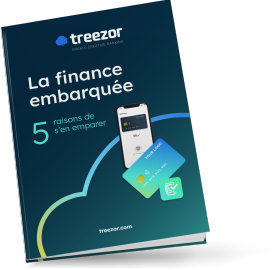What is embedded finance?
Embedded finance can be defined as a set of technical tools for non-financial businesses to provide their customers with financial services. In practice, these businesses call on third parties, such as Treezor which integrates its own technology into their solution. It only takes a few months for the financial features to be integrated into the customer journey.
The BaaS (Banking-as-a-Service) partner provides its licenses and core banking and ensures compliance with regulations. Qonto, that has become a fintech unicorn, is one of the pioneers in the sector and that was able, thanks to Treezor’s solution, to quickly launch its offer and thus conquer market share.
In the beginning: the first integrated payment solutions
To understand how embedded finance works, let’s go back to its beginnings. Back in the 1930s, Ford had already devised the first “automotive bank”. As the financial services were integrated directly in the automaker, customers were able to pay for their vehicle through the latter. Later on, other brands would integrate financial services to facilitate the buying journey, including superstores and online retailers who were the first to establish financing solutions. When the Internet arrived on the scene, everything picked up pace. Loyalty cards became digitised and gained new services, such as consumer credit and payments in instalments. The development of embedded finance would then accelerate, driven by the development and mainstream roll-out of apps available on smartphones. This paved the way to BaaS providers, which would enable the integration of financial services directly on retailers’ digital platforms.
In Europe, the PSD2 – revised Payment Services Directive – which entered into force EU-wide on 13 January 2018 particularly set the stage for the BaaS model to emerge. This directive requires banks to open their ecosystems up to third party providers. Open Banking, with the implementation of APIs (application programming interfaces), now allows communication between the programs of banks and third-party providers. As such, banking data can now be retrieved by other financial stakeholders, especially fintechs. If customers want to transfer their accounts to new financial players, this process is now easier. With the large-scale roll-out of digital tools, consumer practices across the board are being overhauled.

